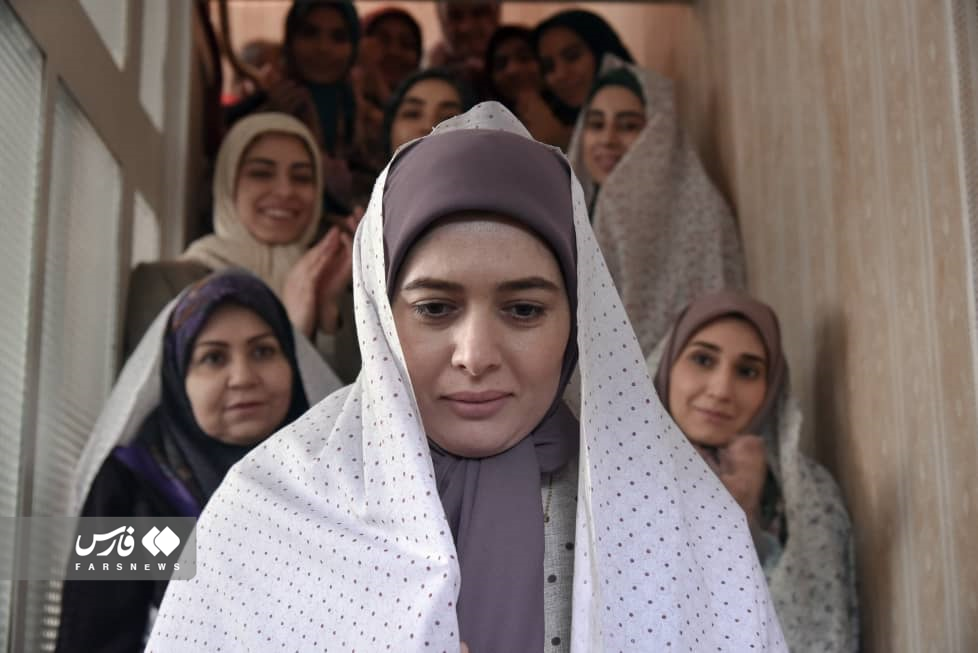Iranian cinema; From the first to the horizons ahead

Fars News Agency – Cinema Group: In 1379, in the fourth big celebration of Iranian cinema, at the same time as the 100th anniversary of the arrival of cinema in Iran, 21 Shahrivar month was recognized as “National Cinema Day”. On the occasion of National Cinema Day, we have a brief look at the role of cinema in the formation of culture, the firsts of cinema in Iran, the state of cinema after the victory of the revolution, the current state of cinema and the future horizons.
* The role of cinema in the formation of culture
Today, the role and influence of cinema on all institutions of human life is clear to everyone. The capital, time and energy spent on film production in the most advanced countries of the world indicate that the definite result of the influence of cinema in various fields has been proven.
In recent years, some of the most attractive movies in the country have been in the field of holy defense and war, these works are based on a new reading of war, for a generation that is not very familiar with the culture of holy defense. The key point and the main feature of these works is the directors’ knowledge of the cinema medium and familiarity with its formal and aesthetic arrangements and tricks, and this is why they were able to be effective.
The undeniable influence of art and cinema on the formation of culture in any society has different angles, to the extent that many world powers have been keeping their weapons in a case decorated by art for years. The fact is that cinema is considered one of the biggest cultural superpowers in the world, and the impact of the smallest appearance on it can be quickly seen among the people of the streets and markets. For this reason, using this modern and at the same time enjoyable world is a new means to show cultures and ideas that may be difficult to express with everyday language.
* The first cinemas in Iran
Iran is one of the first countries in the world to own a cinema. “Cinema Soli” was established in Tabriz in 1279, only 5 years after the invention of the cinema hall by the Lumiere brothers. In the same year, the cinematograph machine was brought to Iran by Muzaffaruddin Shah, and 30 years later, in 1309, the first Iranian cinema film titled “Abi and Robi” was made, directed by Evans Oganianus. This black and white silent film was made for 560 Tomans and was released in It was released in December of 1309, and it was able to sell seven thousand tomans in total.

Blue and Ruby movie
The first Iranian talking movie titled “Dochter Lor” was made in 1312 by an Indian director named Ardeshir Irani in Mumbai. “Whirlpool” (in 16mm cut) is the first Iranian color film that was shown in Tehran cinemas and had great sales in its time. The film was directed and written by Hassan Khordmand in 1332 and was released to the public.

Ali Hatami is one of the most important Iranian filmmakers who was searching for national cinema all his life. Cinema with a personal language and poetic narration and staging
In 1348, Ali Hatami made his first movie titled “Hassan Kachel”, which is considered the first musical film in the history of Iranian cinema. In the same year, 1348, two other important films, “Kaiser” and “Cow” were directed by Masoud Kimiaei. and Dariush Mehrjoui were made. The film “Cow” directed by Dariush Mehrjoei is one of the first films of Iranian cinema, which had a brilliant presence in international festivals and was able to win the Fipershi Award at the Venice Film Festival.

The movie Cow is one of the masterpieces in the history of Iranian cinema, Cow, which was an adaptation of a literary work, has remained in memories with brilliant performances and a philosophical narrative of a simple rural life.
*Iranian cinema after the victory of the revolution
Iranian cinema was accompanied by uncertainty during the revolution and at the same time, it got a new life with the speech of Imam Khomeini (RA), who said that we are not against cinema, but we are against corruption and prostitution. In 1361, Fajr Festival came to work with a different approach to examine and review Iran’s cinematographic works and to be a new starting point in film production, a view that is more compatible with Iran’s national culture and ancient thinking.
At the very beginning of the revolution, some filmmakers used the issues related to the revolution as the basis for making movies, and after that, the holy defense cinema was formed in the 60s.
In the 1960s and 1970s, we saw some brilliant works in the field of cinema, which are not only among the best-selling works of Iranian cinema in terms of statistics, but also in terms of thematic aspects, they still have something to say, and many still remember these works as among the best in Iranian cinema. .

In the 1980s, movies touched on hot topics and society’s red lines. The peak of romantic and so-called “girl-boy” movies was during this era.
In the 80s and 90s, although our works took on a more global face, body cinema, which should have something to say, no longer saw an upward trend. In a decade, the works became so bitter that the audience no longer wanted to see them, and on the other hand, in the late 90s, the works turned towards comedy to such an extent that the social works were put behind the scenes.

The most dominant genre and theme in the 90s of Iranian cinema are so-called vulgar comedies. The so-called comedy films of the recent years of Iranian cinema are not much different from each other and the instructions for making them are the same. Excessive use of immoral jokes and excessive use of sexual references, bold use of profanity, severe weakness of structure and content, choosing trivial names or using the names of foreign cities (Texas, Los Angeles, Miami, Mrs. Yaya, Y Ampoul, etc.) ..) in the titles of the films, the humiliation of the characters in the story of the film, etc., are affected by these characteristics.
* The state of Iranian cinema today; Ahead horizons
The current productions of Iranian cinema have become more attractive in terms of family and family culture, in terms of looking at young people, and in terms of story and content, compared to recent decades.

The awards that Iranian cinema has won in the world are a sign that Iranian cinema has a special feature and that a special culture and a new look are present in this cinema, which shows its value.
The main feature of cinema will be creating self-confidence in the crowd, provided that we believe in the original look of cinema. Unfortunately, due to the neglect of infrastructure and the possibility of not attracting capital in the cinema sector, many of our cultural, literary and historical sources and resources have been forgotten and unused, while some countries are producing non-original and even biased works against culture. And they made the history of Iran that the movie “300” is their best.
Therefore, it can be concluded that the necessity of developing the national cinema to deal with the production of this type of production is felt more than ever; Because neglecting it will have a destructive effect on the cultural and literary infrastructure in the long run. It shows the effect of TV series on the audience and the repetition of some of the dialogues among the people and the actions of the actors and proves how much sensitivity should be shown. In fact, cinema is the best option for the ideal shaping of society, provided that we can make good use of its capacity.

Mehdi’s position film is one of the successful works of today’s Iranian cinema
During the past 4 decades of Iranian cinema, Iranian cinema has suffered a lot in terms of management, strong and transparent law for auditing, lack of competent and knowledgeable producers, lack of proper budgets, and lack of clear and transparent regulations. Unfortunately, the intellectuals have dominated the cinema and committed and revolutionary filmmakers have gone to the sidelines. The production of valuable films with revolutionary themes and sacred defense has decreased, on the one hand, due to the lack of training of young and committed filmmakers, and on the other hand, due to the lack of support from cultural managers and officials for experienced and revolutionary filmmakers, until the films present in the country’s biggest film event In other words, Fajr Film Festival sometimes has nothing to do with Islamic Iranian culture, and by promoting all kinds of moral corruption and showing the luxurious life of film characters, they seek to change the lifestyle of the domestic audience and promote Western culture. Although Iranian cinema is still blessed by some valuable figures and Culture is a cinema that has preserved its human framework and can still be a herald of poetic, beautiful and lovely cinema.

Mehdi’s position film had a new look at the holy defense cinema and was able to shine a new light on the hidden dimensions of the lives of the eight-year war warriors.
In the final analysis, the closure and relative stagnation of cinemas during the Corona epidemic, at the same time as the new government becomes more efficient, can be a good opportunity for a serious review of the country’s macro-cultural policies, especially in the cinema industry. It is hoped that the new Ministry of Culture and Guidance, with the cooperation of experienced, committed and innovative experts in this field, will create a profound change in the film production cycle from the stage of approving the script to the issuance of the screening license, and by compiling binding regulations, explaining the audits in detail, and forming a supervisory council. Decisive on the stages of film making and production, from the very first place, prevent the issuance of production licenses to ridiculous films that conflict with revolutionary, religious and moral ideals and values.
end of message/

